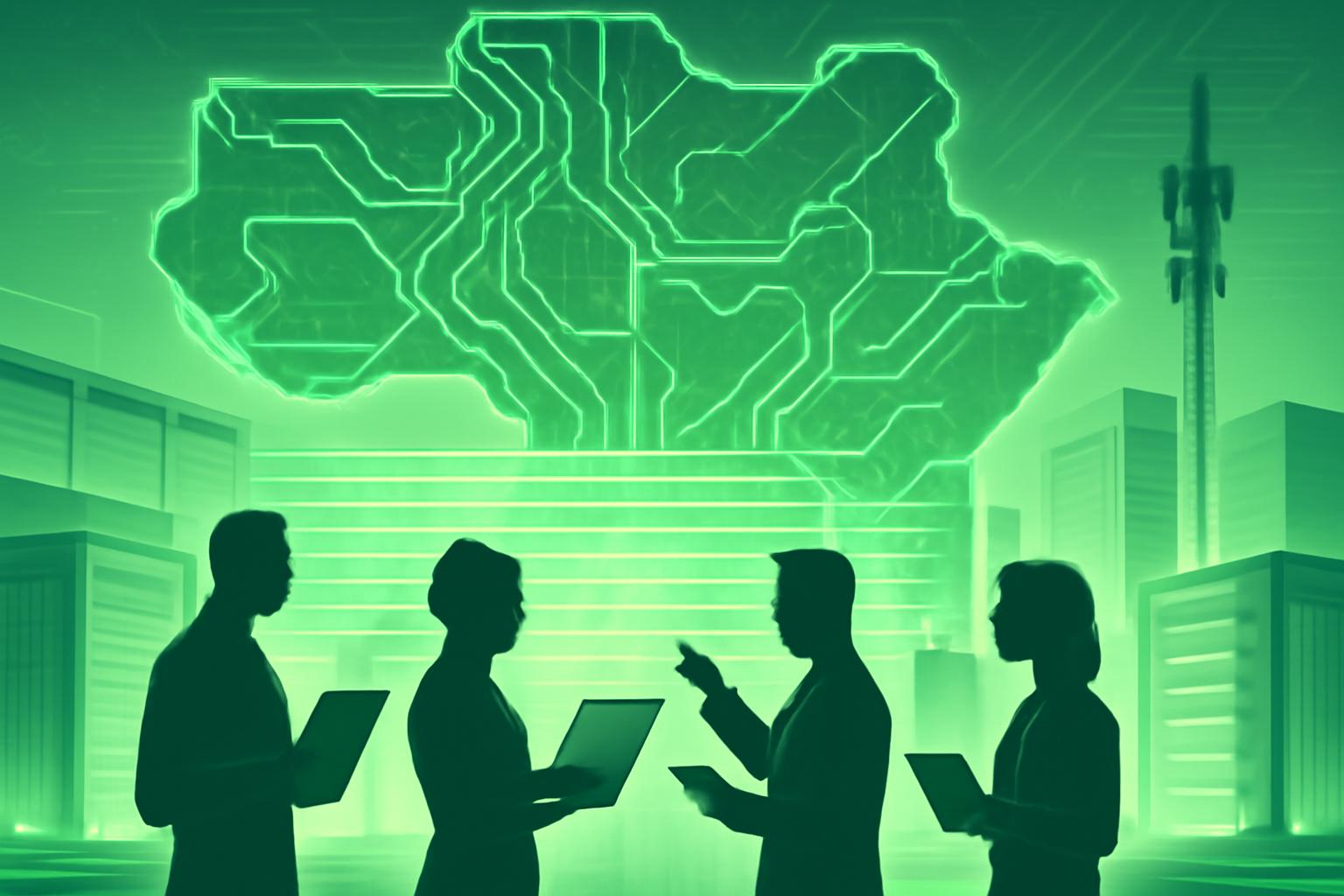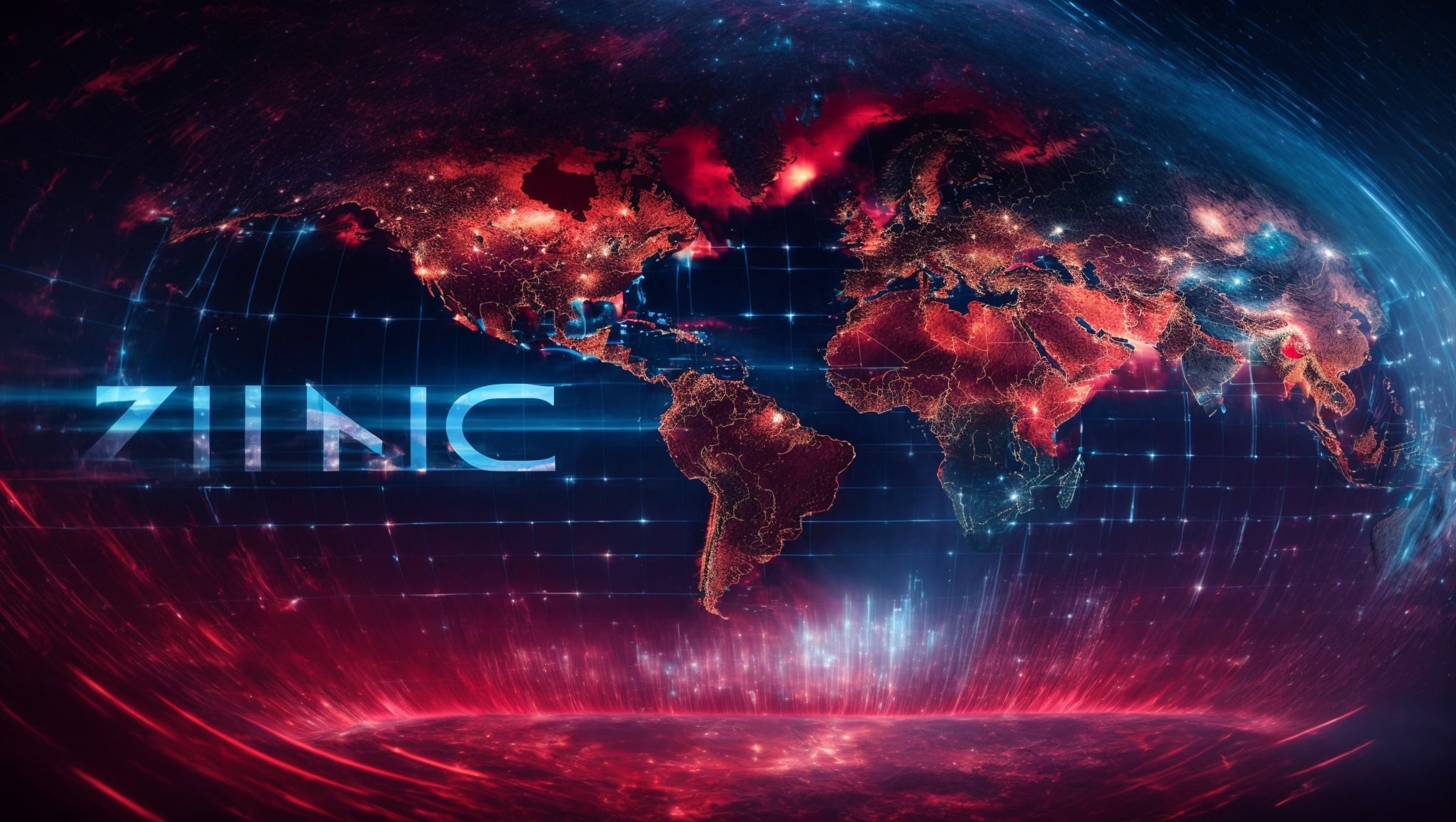Both indices are updated in real-time and accessible to governments and stakeholders via the CivitasAI platform and the Selentium Group official website, supporting informed policymaking and strategic foresight. !-- wp:paragraph -->
FinOracleAI — Market View
The introduction of the Tech Sovereignty Index marks a pivotal advancement in quantifying national technological autonomy. As geopolitical tensions increasingly revolve around AI and critical tech infrastructure, TSI provides a vital tool for governments to benchmark and strategize their tech sovereignty ambitions. !-- wp:paragraph -->- Opportunities: Enables policymakers to identify strategic gaps in technology independence and prioritize investments in domestic R&D and infrastructure.
- Risks: Countries lagging in TSI rankings may face heightened vulnerabilities to supply chain disruptions and geopolitical leverage.
- Potential integration of TSI into international policy frameworks could drive global standards for tech sovereignty.
- Autonomous AI-driven metric development exemplifies the evolving role of AI in statecraft and analytics.
Impact: The Tech Sovereignty Index is set to become a critical benchmark influencing national security strategies and international tech policy, underscoring the shift from resource-based power to digital and technological autonomy.
The Tech Sovereignty Index complements the Civitas Readiness Index by providing a dual framework that addresses both preparedness and independence in technology: !-- wp:paragraph -->- Civitas Readiness Index (CRI): Measures a nation’s readiness to adopt and integrate AI technologies.
- Tech Sovereignty Index (TSI): Assesses a country’s capacity for true technological independence.
FinOracleAI — Market View
The introduction of the Tech Sovereignty Index marks a pivotal advancement in quantifying national technological autonomy. As geopolitical tensions increasingly revolve around AI and critical tech infrastructure, TSI provides a vital tool for governments to benchmark and strategize their tech sovereignty ambitions. !-- wp:paragraph -->- Opportunities: Enables policymakers to identify strategic gaps in technology independence and prioritize investments in domestic R&D and infrastructure.
- Risks: Countries lagging in TSI rankings may face heightened vulnerabilities to supply chain disruptions and geopolitical leverage.
- Potential integration of TSI into international policy frameworks could drive global standards for tech sovereignty.
- Autonomous AI-driven metric development exemplifies the evolving role of AI in statecraft and analytics.
Impact: The Tech Sovereignty Index is set to become a critical benchmark influencing national security strategies and international tech policy, underscoring the shift from resource-based power to digital and technological autonomy.
According to CivitasAI’s initial assessment, the highest rankings in technological sovereignty are held by the United States, China, South Korea, Taiwan, and Israel. Furthermore, multiple governments across the Middle East, North Africa (MENA), and Europe have expressed intent to incorporate the TSI into their strategic planning and policy frameworks. !-- wp:paragraph -->“TSI was not built on commission — CivitasAI completed it autonomously as the logical extension of CRI. This demonstrates that artificial intelligence can not only analyze reality but also generate entirely new metrics for states.”
David Levinson, CTO of Selentium Group AGTSI and CRI: Complementary Indices for a Comprehensive Tech Assessment
The Tech Sovereignty Index complements the Civitas Readiness Index by providing a dual framework that addresses both preparedness and independence in technology: !-- wp:paragraph -->- Civitas Readiness Index (CRI): Measures a nation’s readiness to adopt and integrate AI technologies.
- Tech Sovereignty Index (TSI): Assesses a country’s capacity for true technological independence.
FinOracleAI — Market View
The introduction of the Tech Sovereignty Index marks a pivotal advancement in quantifying national technological autonomy. As geopolitical tensions increasingly revolve around AI and critical tech infrastructure, TSI provides a vital tool for governments to benchmark and strategize their tech sovereignty ambitions. !-- wp:paragraph -->- Opportunities: Enables policymakers to identify strategic gaps in technology independence and prioritize investments in domestic R&D and infrastructure.
- Risks: Countries lagging in TSI rankings may face heightened vulnerabilities to supply chain disruptions and geopolitical leverage.
- Potential integration of TSI into international policy frameworks could drive global standards for tech sovereignty.
- Autonomous AI-driven metric development exemplifies the evolving role of AI in statecraft and analytics.
Impact: The Tech Sovereignty Index is set to become a critical benchmark influencing national security strategies and international tech policy, underscoring the shift from resource-based power to digital and technological autonomy.
In an era marked by intensifying global competition for AI dominance, technological dependence on foreign imports poses significant risks to national security and economic stability. The Tech Sovereignty Index emerges as a critical benchmark, analogous to the strategic relevance of oil and nuclear capabilities in the previous century. !-- wp:paragraph -->“We now live in a world where a country’s power is no longer defined by armies or oil, but by its ability to design chips, store its own data, and develop its own artificial intelligence. TSI is the mirror of the 21st century. It shows who is truly independent — and who only imitates sovereignty.”
Marsel Murtazin, CEO of Selentium Group AGPreliminary Rankings and Global Interest
According to CivitasAI’s initial assessment, the highest rankings in technological sovereignty are held by the United States, China, South Korea, Taiwan, and Israel. Furthermore, multiple governments across the Middle East, North Africa (MENA), and Europe have expressed intent to incorporate the TSI into their strategic planning and policy frameworks. !-- wp:paragraph -->“TSI was not built on commission — CivitasAI completed it autonomously as the logical extension of CRI. This demonstrates that artificial intelligence can not only analyze reality but also generate entirely new metrics for states.”
David Levinson, CTO of Selentium Group AGTSI and CRI: Complementary Indices for a Comprehensive Tech Assessment
The Tech Sovereignty Index complements the Civitas Readiness Index by providing a dual framework that addresses both preparedness and independence in technology: !-- wp:paragraph -->- Civitas Readiness Index (CRI): Measures a nation’s readiness to adopt and integrate AI technologies.
- Tech Sovereignty Index (TSI): Assesses a country’s capacity for true technological independence.
FinOracleAI — Market View
The introduction of the Tech Sovereignty Index marks a pivotal advancement in quantifying national technological autonomy. As geopolitical tensions increasingly revolve around AI and critical tech infrastructure, TSI provides a vital tool for governments to benchmark and strategize their tech sovereignty ambitions. !-- wp:paragraph -->- Opportunities: Enables policymakers to identify strategic gaps in technology independence and prioritize investments in domestic R&D and infrastructure.
- Risks: Countries lagging in TSI rankings may face heightened vulnerabilities to supply chain disruptions and geopolitical leverage.
- Potential integration of TSI into international policy frameworks could drive global standards for tech sovereignty.
- Autonomous AI-driven metric development exemplifies the evolving role of AI in statecraft and analytics.
Impact: The Tech Sovereignty Index is set to become a critical benchmark influencing national security strategies and international tech policy, underscoring the shift from resource-based power to digital and technological autonomy.
The CivitasAI platform, following its successful launch of the Civitas Readiness Index (CRI), has independently developed a groundbreaking analytical tool — the Tech Sovereignty Index (TSI). This innovative index benchmarks a nation’s genuine technological sovereignty, a defining attribute of the 21st century geopolitical landscape. !-- wp:paragraph -->Core Components of the Tech Sovereignty Index
- Domestic production capacity of chips and microelectronics;
- Development and deployment capabilities of Large Language Models (LLMs) and AI platforms;
- National data center capacity and geographic distribution;
- Robustness of telecommunications and cloud infrastructure.
The Strategic Importance of TSI in Today’s Tech Landscape
In an era marked by intensifying global competition for AI dominance, technological dependence on foreign imports poses significant risks to national security and economic stability. The Tech Sovereignty Index emerges as a critical benchmark, analogous to the strategic relevance of oil and nuclear capabilities in the previous century. !-- wp:paragraph -->“We now live in a world where a country’s power is no longer defined by armies or oil, but by its ability to design chips, store its own data, and develop its own artificial intelligence. TSI is the mirror of the 21st century. It shows who is truly independent — and who only imitates sovereignty.”
Marsel Murtazin, CEO of Selentium Group AGPreliminary Rankings and Global Interest
According to CivitasAI’s initial assessment, the highest rankings in technological sovereignty are held by the United States, China, South Korea, Taiwan, and Israel. Furthermore, multiple governments across the Middle East, North Africa (MENA), and Europe have expressed intent to incorporate the TSI into their strategic planning and policy frameworks. !-- wp:paragraph -->“TSI was not built on commission — CivitasAI completed it autonomously as the logical extension of CRI. This demonstrates that artificial intelligence can not only analyze reality but also generate entirely new metrics for states.”
David Levinson, CTO of Selentium Group AGTSI and CRI: Complementary Indices for a Comprehensive Tech Assessment
The Tech Sovereignty Index complements the Civitas Readiness Index by providing a dual framework that addresses both preparedness and independence in technology: !-- wp:paragraph -->- Civitas Readiness Index (CRI): Measures a nation’s readiness to adopt and integrate AI technologies.
- Tech Sovereignty Index (TSI): Assesses a country’s capacity for true technological independence.
FinOracleAI — Market View
The introduction of the Tech Sovereignty Index marks a pivotal advancement in quantifying national technological autonomy. As geopolitical tensions increasingly revolve around AI and critical tech infrastructure, TSI provides a vital tool for governments to benchmark and strategize their tech sovereignty ambitions. !-- wp:paragraph -->- Opportunities: Enables policymakers to identify strategic gaps in technology independence and prioritize investments in domestic R&D and infrastructure.
- Risks: Countries lagging in TSI rankings may face heightened vulnerabilities to supply chain disruptions and geopolitical leverage.
- Potential integration of TSI into international policy frameworks could drive global standards for tech sovereignty.
- Autonomous AI-driven metric development exemplifies the evolving role of AI in statecraft and analytics.
Impact: The Tech Sovereignty Index is set to become a critical benchmark influencing national security strategies and international tech policy, underscoring the shift from resource-based power to digital and technological autonomy.
Introducing the Tech Sovereignty Index: A New Standard for National Tech Autonomy
The CivitasAI platform, following its successful launch of the Civitas Readiness Index (CRI), has independently developed a groundbreaking analytical tool — the Tech Sovereignty Index (TSI). This innovative index benchmarks a nation’s genuine technological sovereignty, a defining attribute of the 21st century geopolitical landscape. !-- wp:paragraph -->Core Components of the Tech Sovereignty Index
- Domestic production capacity of chips and microelectronics;
- Development and deployment capabilities of Large Language Models (LLMs) and AI platforms;
- National data center capacity and geographic distribution;
- Robustness of telecommunications and cloud infrastructure.
The Strategic Importance of TSI in Today’s Tech Landscape
In an era marked by intensifying global competition for AI dominance, technological dependence on foreign imports poses significant risks to national security and economic stability. The Tech Sovereignty Index emerges as a critical benchmark, analogous to the strategic relevance of oil and nuclear capabilities in the previous century. !-- wp:paragraph -->“We now live in a world where a country’s power is no longer defined by armies or oil, but by its ability to design chips, store its own data, and develop its own artificial intelligence. TSI is the mirror of the 21st century. It shows who is truly independent — and who only imitates sovereignty.”
Marsel Murtazin, CEO of Selentium Group AGPreliminary Rankings and Global Interest
According to CivitasAI’s initial assessment, the highest rankings in technological sovereignty are held by the United States, China, South Korea, Taiwan, and Israel. Furthermore, multiple governments across the Middle East, North Africa (MENA), and Europe have expressed intent to incorporate the TSI into their strategic planning and policy frameworks. !-- wp:paragraph -->“TSI was not built on commission — CivitasAI completed it autonomously as the logical extension of CRI. This demonstrates that artificial intelligence can not only analyze reality but also generate entirely new metrics for states.”
David Levinson, CTO of Selentium Group AGTSI and CRI: Complementary Indices for a Comprehensive Tech Assessment
The Tech Sovereignty Index complements the Civitas Readiness Index by providing a dual framework that addresses both preparedness and independence in technology: !-- wp:paragraph -->- Civitas Readiness Index (CRI): Measures a nation’s readiness to adopt and integrate AI technologies.
- Tech Sovereignty Index (TSI): Assesses a country’s capacity for true technological independence.
FinOracleAI — Market View
The introduction of the Tech Sovereignty Index marks a pivotal advancement in quantifying national technological autonomy. As geopolitical tensions increasingly revolve around AI and critical tech infrastructure, TSI provides a vital tool for governments to benchmark and strategize their tech sovereignty ambitions. !-- wp:paragraph -->- Opportunities: Enables policymakers to identify strategic gaps in technology independence and prioritize investments in domestic R&D and infrastructure.
- Risks: Countries lagging in TSI rankings may face heightened vulnerabilities to supply chain disruptions and geopolitical leverage.
- Potential integration of TSI into international policy frameworks could drive global standards for tech sovereignty.
- Autonomous AI-driven metric development exemplifies the evolving role of AI in statecraft and analytics.
Impact: The Tech Sovereignty Index is set to become a critical benchmark influencing national security strategies and international tech policy, underscoring the shift from resource-based power to digital and technological autonomy.













